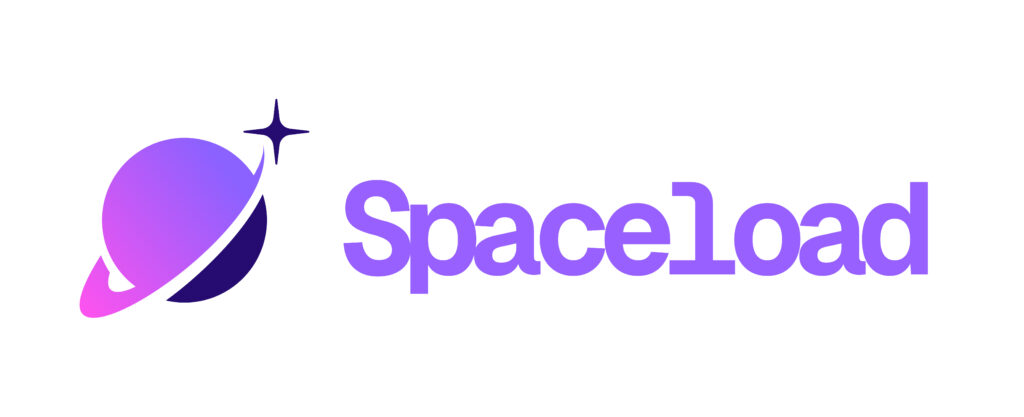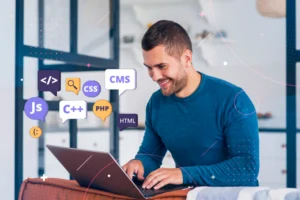Running a SaaS business without proper SEO is like building a skyscraper without elevators – technically possible, but incredibly inefficient. Furthermore, if you’re pouring money into paid ads while your competitors are quietly dominating search results, it’s time to get serious about SEO for SaaS.
The SaaS landscape has exploded, with over 30,000 SaaS companies competing for attention. Meanwhile, your potential customers are searching for solutions right now, but are they finding you? Therefore, let’s dive into how SaaS companies can leverage SEO to build sustainable, organic growth that doesn’t disappear when you pause your ad spend.
Why SEO for SaaS is Different (And Why Most Get It Wrong)
Unlike typical e-commerce or blog SEO strategies, SaaS SEO presents unique challenges. Instead of selling products that people can touch, you’re selling solutions to complex problems. Moreover, your customers have longer decision-making processes, higher lifetime values, and very specific search behaviors.
The SaaS SEO Challenge:
- Long sales cycles (3-18 months average)
- Complex buyer journeys with multiple stakeholders
- High competition for commercial keywords
- Need to balance brand awareness with lead generation
- Technical product explanations that must remain accessible
Unfortunately, most SaaS companies make the mistake of focusing solely on product keywords like “project management software.” As a result, they ignore the goldmine of problem-based searches like “how to improve team collaboration remotely.”
The SaaS SEO Strategy Framework That Actually Works
1. Master the SaaS Customer Journey
First and foremost, your SEO strategy must align with how SaaS buyers actually search and purchase. Additionally, understanding each stage helps you create targeted content that converts:
Awareness Stage (Problem-Aware):
- “Why is my team missing deadlines?”
- “Remote work productivity challenges”
- “Signs you need project management software”
Consideration Stage (Solution-Aware):
- “Best project management tools for small teams”
- “Asana vs Trello vs Monday.com”
- “Project management software features to look for”

Decision Stage (Product-Aware):
- “[Your Brand] reviews”
- “[Your Brand] pricing”
- “[Your Brand] vs [Competitor]”
2. The TOFU-MOFU-BOFU Content Strategy
Next, let’s examine how to structure your content across the buyer’s journey. Consequently, this approach ensures you capture users at every stage:
| Funnel Stage | Content Type | SEO Focus | Example Keywords |
|---|---|---|---|
| TOFU (Top of Funnel) | Educational blogs, guides | High volume, informational | “how to”, “what is”, “benefits of” |
| MOFU (Middle of Funnel) | Comparison posts, case studies | Commercial investigation | “best”, “vs”, “alternatives” |
| BOFU (Bottom of Funnel) | Product pages, demos, trials | High-intent commercial | “pricing”, “reviews”, “demo” |
3. Technical SEO Foundations for SaaS
However, content strategy alone isn’t enough. Without solid technical foundations, even the best content won’t rank. Therefore, focus on these critical elements:
Site Architecture That Converts:
- Clear product hierarchy: Homepage → Solution Categories → Individual Products
- Optimized internal linking between related features
- Fast loading times (especially important for app-heavy SaaS sites)
- Mobile-first design (62% of B2B research happens on mobile)
Common SaaS Technical SEO Mistakes:
- Blocking product demo pages from search engines
- Duplicate content across similar feature pages
- Poor URL structure for different pricing tiers
- Missing schema markup for SaaS-specific elements
Advanced SaaS SEO Tactics That Drive Results
Content Cluster Strategy
Instead of creating random blog posts, build topic clusters around your core solutions. Furthermore, this approach helps you dominate entire topic areas, not just individual keywords:
Main Hub Page: “Customer Support Software” (target: high-volume keyword) Supporting Pages:
- “Live chat best practices”
- “How to reduce support ticket volume”
- “Customer satisfaction metrics that matter”
- “Building a knowledge base customers actually use”
As a result, this strategy positions your brand as the authoritative source for specific solutions.
Competitor SEO Analysis
Moreover, your competitors are your best teachers. Here’s how to reverse-engineer their success:
- Identify content gaps: What keywords are they ranking for that you’re not?
- Analyze their backlink profiles: Where are they getting high-quality links?
- Study their conversion funnels: How do they move users from search to trial?
- Monitor their new content: Set up alerts for competitor content publication
The Power of Programmatic SEO for SaaS
Additionally, programmatic SEO involves creating hundreds or thousands of pages at scale. For SaaS companies, this might include:
- Integration pages (e.g., “Slack integration,” “Salesforce integration”)
- Location-based pages for local SaaS solutions
- Use case pages for different industries
- Comparison pages against every major competitor
Example: A CRM company could create pages for “CRM for [Industry]” targeting 50+ industries, each with tailored content and examples.
Measuring SaaS SEO Success: Metrics That Matter
Traditional SEO metrics don’t tell the full SaaS story. Instead, here’s what to track:
Primary Metrics:
- Organic MQLs (Marketing Qualified Leads): How many qualified leads come from organic search?
- Trial Sign-ups from Organic: Direct correlation between SEO and business growth
- Customer Acquisition Cost (CAC) from Organic: Typically 5-10x lower than paid channels
- Customer Lifetime Value (LTV) from Organic: Often higher than paid traffic
Supporting Metrics:
- Keyword rankings for commercial terms
- Organic traffic growth by funnel stage
- Content engagement metrics (time on page, bounce rate)
- Backlink acquisition rate
Common SaaS SEO Mistakes (And How to Avoid Them)
Mistake #1: Keyword Stuffing in Product Descriptions Instead of cramming keywords, focus on natural language that explains value propositions clearly. Therefore, prioritize user experience over keyword density.
Mistake #2: Ignoring User Intent Don’t just target high-volume keywords. For instance, a user searching “free project management” likely isn’t ready for an enterprise solution. Consequently, match your content to search intent.
Mistake #3: Neglecting Local SEO Even B2B SaaS can benefit from local SEO, especially for location-specific compliance or regulations. Furthermore, local optimization can help with geo-targeted campaigns.
Mistake #4: Poor Internal Linking Connect related product features, use cases, and educational content to keep users engaged longer. As a result, this improves both SEO performance and user experience.
The Future of SEO for SaaS: Trends to Watch
AI-Powered Search: Google’s AI advancements mean focusing on comprehensive, authoritative content that directly answers user questions. Additionally, search engines are getting better at understanding context and intent.
Voice Search Optimization: B2B voice searches are growing. Therefore, optimize for conversational queries like “What’s the best CRM for small businesses?”
Video SEO: Product demos and explainer videos are becoming crucial for SaaS SEO success. Moreover, video content often ranks higher in search results.
Getting Started: Your 90-Day SaaS SEO Action Plan
Days 1-30: Foundation First, conduct comprehensive keyword research across the entire funnel. Next, audit technical SEO issues. Finally, analyze your top 5 competitors.
Days 31-60: Content Creation Subsequently, develop topic clusters around core solutions. Then, create TOFU content targeting problem-aware searches. Additionally, optimize existing product pages.
Days 61-90: Optimization & Scaling After that, build high-quality backlinks through strategic partnerships. Furthermore, implement programmatic SEO for scale. Finally, set up comprehensive tracking and reporting.
Frequently Asked Questions
Q: How long does SEO take to work for SaaS companies? A: SaaS SEO typically takes 6-12 months to show significant results due to longer sales cycles and higher competition. However, you might see early wins with long-tail, problem-focused keywords within 2-3 months. Furthermore, patience and consistency are key to long-term success.
Q: What’s the biggest difference between SaaS SEO and e-commerce SEO? A: SaaS SEO focuses more on educating and nurturing prospects through longer sales cycles, while e-commerce SEO typically targets immediate purchase intent. Additionally, SaaS requires more emphasis on content marketing and thought leadership.
Q: How important are backlinks for SaaS SEO? A: Extremely important. SaaS is a competitive space where domain authority matters significantly. Therefore, focus on earning links from industry publications, partner integrations, and customer success stories.
Q: Can small SaaS companies compete with enterprise solutions in SEO? A: Absolutely. Small SaaS companies can compete by targeting long-tail keywords, specific use cases, and underserved market segments that larger competitors might overlook. Moreover, agility and niche focus can be significant advantages.
Ready to transform your SaaS growth with strategic SEO? The companies that master SEO for SaaS don’t just survive – they thrive while their competitors burn through ad budgets. Therefore, start with the fundamentals, think long-term, and remember: in SaaS, sustainable growth beats quick wins every time.



